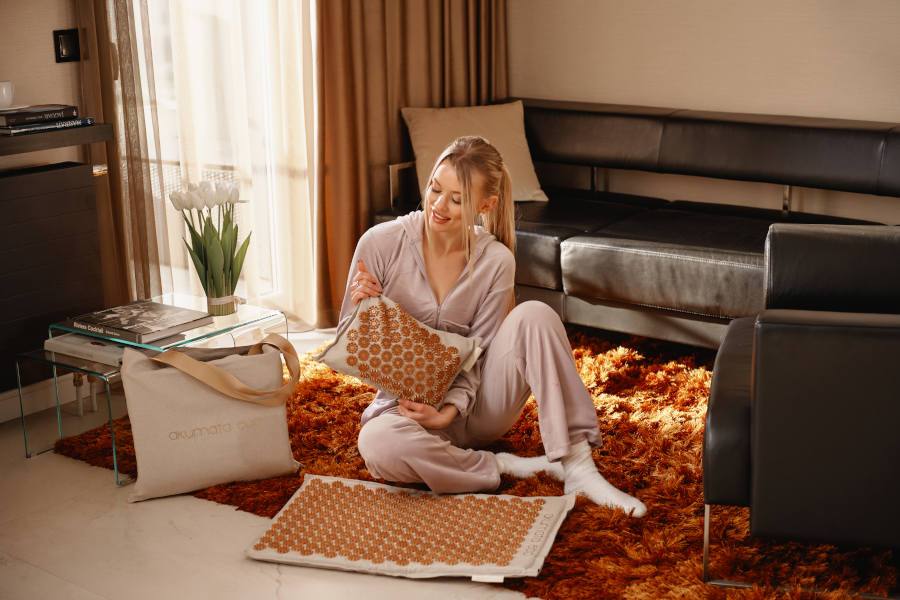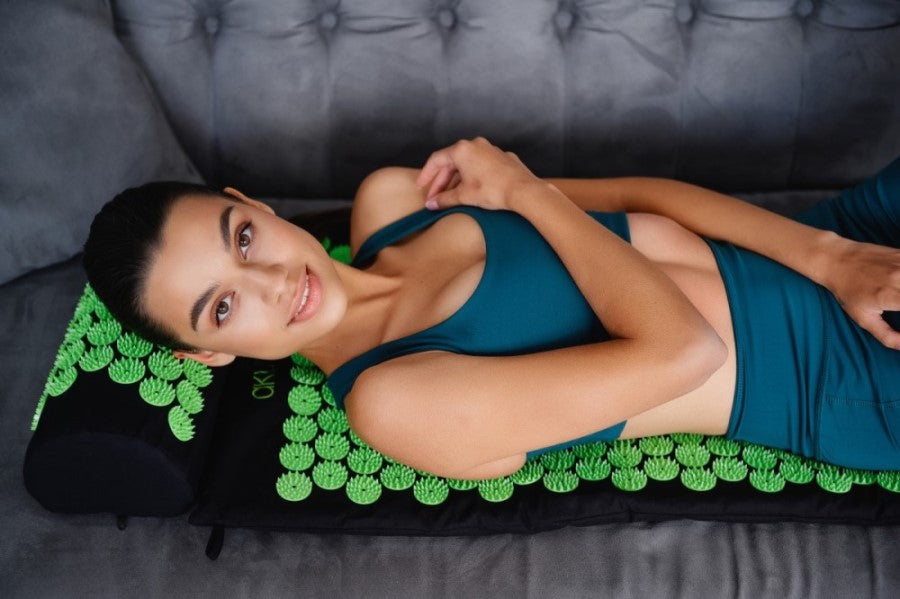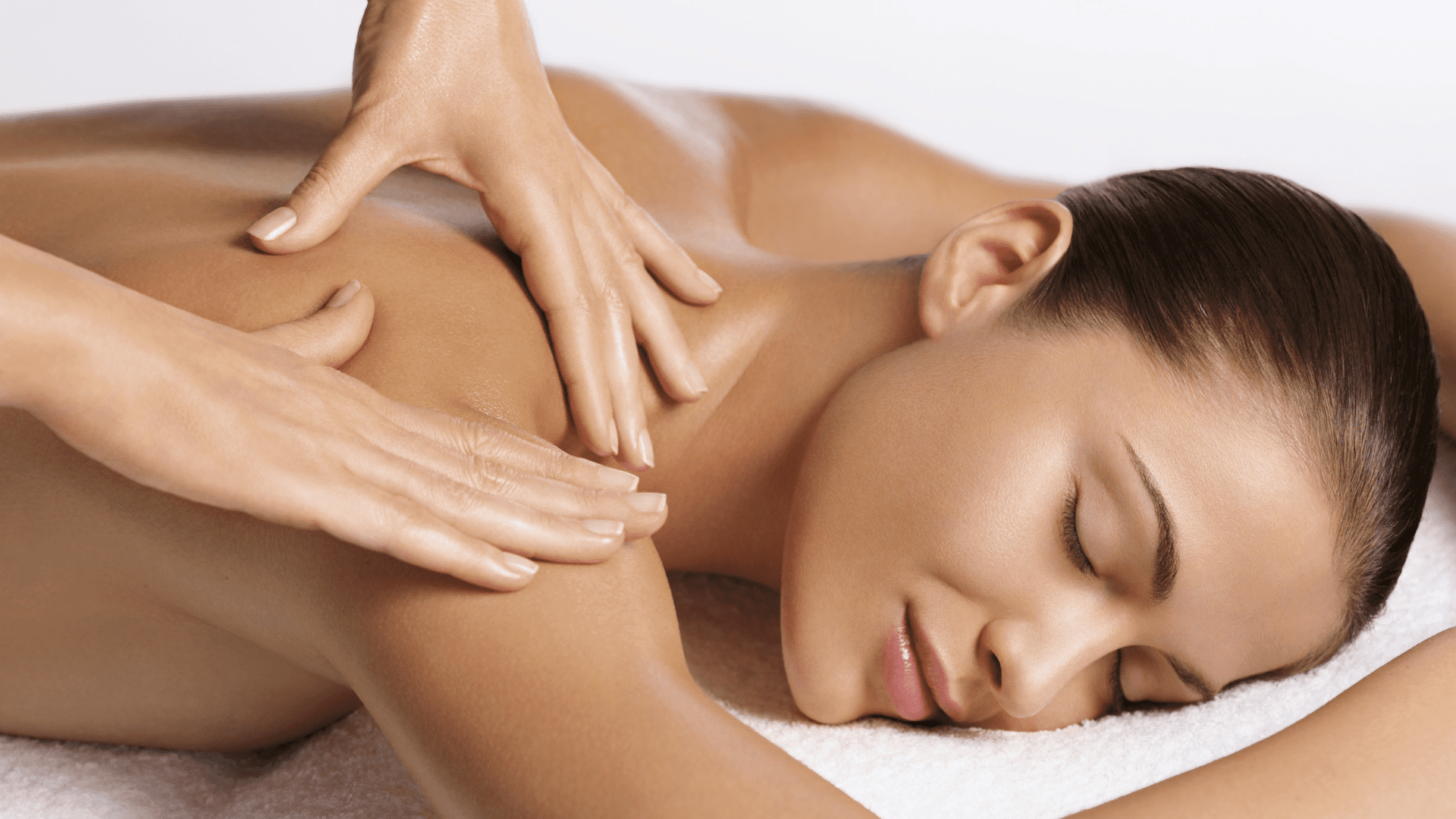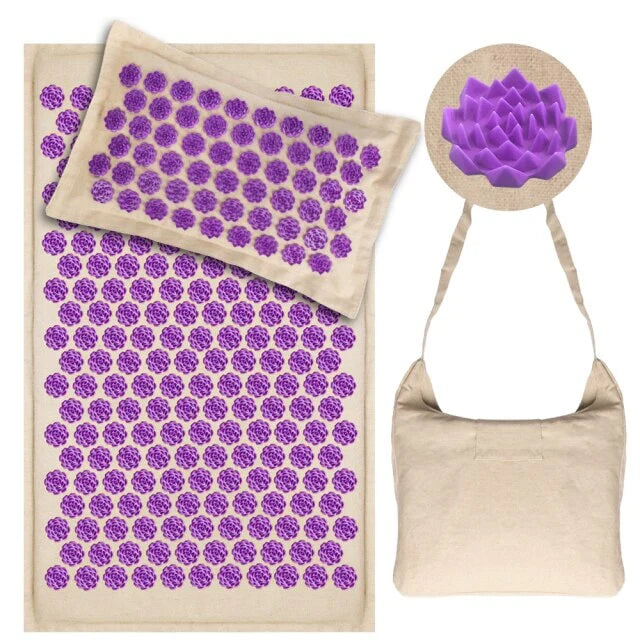Comprendre les principes de l'acupression

Définition et origines traditionnelles
L'acupression est une forme de médecine alternative issue de la médecine traditionnelle chinoise (MTC) . Elle consiste à exercer une pression sur des points spécifiques du corps humain, appelés points d'acupuncture. Les praticiens utilisent leurs doigts, leur pouce, leur paume ou même leurs coudes pour exercer la pression.
Cette pratique vise à rétablir la circulation de l'énergie vitale, ou « qi », à travers des canaux appelés méridiens. Selon la médecine chinoise , les blocages dans ces méridiens perturbent l'équilibre du yin et du yang, entraînant des problèmes de santé. L'objectif de l'acupression est de rétablir l'équilibre et de favoriser la guérison.
Différences entre l'acupression et l'acupuncture
L'acupression et l'acupuncture partagent des principes similaires, se concentrant sur la stimulation des points d'acupuncture pour traiter divers symptômes. Cependant, alors que l'acupuncture utilise de fines aiguilles, l'acupression repose sur une pression manuelle.
L'acupression est parfois comparée à la réflexologie, car toutes deux impliquent des pressions sur des points précis pour influencer la santé globale. Bien que l'acupression n'utilise pas d'aiguilles , elle peut être tout aussi efficace, notamment pour les personnes qui privilégient les thérapies non invasives.
Comment fonctionne l’acupression au niveau physiologique ?

Les mécanismes derrière les effets de l'acupression
Des études scientifiques suggèrent que l'acupression fonctionne en appliquant une pression sur des points d'acupuncture spécifiques, ce qui stimule la circulation sanguine , déclenche la libération d'endorphines et stimule les réactions naturelles de guérison du corps. L'application d'une pression sur un point d'acupuncture contribue à détendre les muscles tendus et à soulager la douleur.
Cette pression peut modifier la transmission des signaux de douleur au cerveau, réduisant ainsi la douleur chronique et améliorant le bien-être général. Des études indiquent également que l'acupression peut influencer le système nerveux, ce qui en fait une technique utile pour la gestion de la douleur et le soulagement de l'anxiété.
Études fondées sur des données probantes et recherches en cours
Des recherches récentes, notamment des revues systématiques et des essais contrôlés, ont exploré l'efficacité de l'acupression dans la prise en charge de divers problèmes de santé. Des études publiées dans la base de données Cochrane montrent que l'acupression contribue à réduire les nausées et les vomissements chez les patients sous chimiothérapie.
D'autres essais cliniques ont examiné l'utilisation de l'acupression pour les nausées postopératoires, la gestion de l'anxiété et la douleur chronique. Ces résultats confirment les effets thérapeutiques de l'acupression, notamment lorsqu'elle est utilisée comme thérapie complémentaire.
Bienfaits de l'acupression et ses applications thérapeutiques

Soulager la douleur et la tension
L'un des principaux bienfaits de l'acupression est sa capacité à soulager la douleur et à réduire les tensions corporelles . En ciblant des points d'acupuncture spécifiques, l'acupression peut gérer efficacement les douleurs chroniques, les maux de tête et les tensions musculaires.
Elle est souvent utilisée comme technique de soulagement de la douleur pour les personnes souffrant de douleurs cervicales, articulaires ou de céphalées de tension. Les praticiens exercent une pression pour stimuler la circulation et soulager l'inconfort, offrant ainsi une alternative naturelle aux traitements médicaux.
Soutenir le bien-être mental et émotionnel
L'acupression est également efficace pour traiter les problèmes émotionnels et de santé mentale . Il a été démontré qu'elle contribue à réduire le stress, à favoriser la relaxation et à améliorer la qualité du sommeil.
En stimulant les points d'acupuncture liés à l'anxiété et à l'insomnie, l'acupression peut aider les individus à se sentir plus à l'aise. Pour les personnes confrontées à l'anxiété, l'acupression est un outil précieux pour rétablir l'équilibre émotionnel et favoriser le bien-être général.
Que se passe-t-il lors d'une séance d'acupression ?

Le déroulement d'un traitement d'acupression
Lors d'une séance d'acupression, un praticien ou massothérapeute agréé commence par évaluer les symptômes et les antécédents médicaux du patient. Il identifie ensuite les points d'acupuncture pertinents en fonction de son état. À l'aide de techniques impliquant les doigts, les pouces ou les paumes, le praticien applique une pression manuelle constante sur les points choisis.
Les séances durent généralement entre 30 et 60 minutes et les clients peuvent ressentir une sensation de chaleur, de picotements ou de mouvement dans la zone affectée. Ces sensations indiquent une augmentation du flux énergétique et une meilleure circulation.
Précautions et considérations de sécurité
Bien que l'acupression soit généralement sans danger, il est essentiel de consulter un professionnel de santé avant de commencer, en particulier pour les femmes enceintes ou les personnes souffrant de problèmes de santé spécifiques. Bien que l'acupression soit sans danger pour les femmes enceintes, il est essentiel d'éviter certains points d'acupuncture susceptibles de déclencher le travail.
Les praticiens formés aux techniques d'acupression pour les femmes enceintes peuvent adapter les séances pour garantir sécurité et efficacité. Pour toute personne présentant des problèmes médicaux importants, il est préférable de consulter un médecin ou un professionnel de santé.
Intégrer l'acupression aux pratiques de santé modernes

Combiner l'acupression avec d'autres approches thérapeutiques
Ces dernières années, l'acupression a été associée à d'autres pratiques de bien-être pour en améliorer l'efficacité. Par exemple, l'association de l'acupression à la massothérapie permet de réduire les tensions musculaires et de favoriser la relaxation.
Elle est également fréquemment associée à la réflexologie, à la méditation guidée et à l'aromathérapie pour une approche globale de la santé. L'acupression agit en stimulant des points d'acupuncture spécifiques et, combinée à d'autres pratiques, elle permet d'amplifier ses bienfaits.
L'essor des appareils d'acupression et des outils d'autosoins
L'acupression n'est plus réservée aux cliniques professionnelles. Des appareils d'auto-soins comme les tapis d'acupression permettent de pratiquer l'acupression à domicile, en appliquant une pression constante sur des points clés sans l'aide d'un praticien. Ces outils sont conçus pour reproduire les effets de l'acupression manuelle, en ciblant des points d'acupuncture sur les pieds, le dos et d'autres zones.
L’application de pression avec des tapis d’acupression a gagné en popularité en tant que méthode accessible pour gérer des symptômes tels que la douleur chronique, l’insomnie et le stress .
Conclusion

L'acupression est une pratique polyvalente et éprouvée, profondément ancrée dans la médecine traditionnelle chinoise. En appliquant une pression sur des points d'acupuncture spécifiques le long des méridiens, l'acupression vise à rétablir la circulation énergétique, à soulager la douleur et à améliorer le bien-être général .
Qu'elle soit pratiquée par un praticien qualifié ou à l'aide d'outils d'auto-soins comme des tapis d'acupression, cette technique ancienne reste un élément précieux de la médecine intégrative moderne.
Des études en cours et des recherches fondées sur des preuves continuent de valider son efficacité dans la promotion de la santé physique et émotionnelle , faisant de l’acupression un choix accessible et fiable pour ceux qui recherchent des alternatives naturelles aux traitements conventionnels.
Questions fréquemment posées
1. Qu’est-ce que l’acupression et comment fonctionne-t-elle ?
L'acupression est une technique thérapeutique issue de la médecine chinoise ancienne. Elle consiste à exercer une pression sur des points spécifiques du corps , appelés points d'acupuncture . Cette technique repose sur le concept des méridiens, censés relier les organes et les voies énergétiques du corps.
La pression est appliquée sur des points spécifiques à l'aide des doigts, des pouces ou des coudes, stimulant ces points pour soulager des symptômes tels que les nausées, la douleur et le stress. Similaire à l'acupuncture chinoise, l'acupression vise à rétablir la circulation de la force vitale (qi) et à favoriser la guérison du corps.
2. Comment l’acupression aide-t-elle à soulager la douleur ?
L'acupression aide à soulager la douleur en ciblant des points d'acupuncture spécifiques correspondant à différentes parties du corps. La pression exercée stimule la libération d'endorphines , analgésiques naturels.
L'acupression est une technique qui consiste à appliquer une pression pour détendre les tissus mous et améliorer la circulation sanguine, ce qui la rend efficace pour la gestion des symptômes. Des preuves scientifiques et des essais contrôlés ont démontré que l'acupression traite efficacement des affections telles que les douleurs chroniques, les céphalées de tension et les douleurs cervicales.
3. L’acupression est-elle efficace contre les nausées ?
Oui, l'acupression est efficace pour réduire les nausées , en particulier chez les patientes sous chimiothérapie ou souffrant de nausées matinales. Le point P6 (Neiguan), situé à l'intérieur du poignet, est un point d'acupuncture fréquemment ciblé contre les nausées.
En pratique clinique, il a été démontré que la pression sur ce point d'acupuncture contribue à réduire les nausées et les vomissements. Des chercheurs menant des études sur les méridiens et des essais contrôlés randomisés ont constaté que cette technique pouvait soulager les symptômes de nausées chez les patients atteints de cancer et d'autres pathologies.
4. Comment l’acupression améliore-t-elle la qualité du sommeil ?
L'acupression peut contribuer à améliorer la qualité du sommeil en ciblant des points d'acupuncture spécifiques associés à la relaxation et à la réduction du stress. La pression manuelle appliquée en acupression stimule ces points pour favoriser une sensation de calme et faciliter l'endormissement.
L'acupression favorise la relaxation et renforce l'équilibre du yin et du yang, éléments clés du maintien d'une bonne santé selon les principes chinois anciens. Des études suggèrent que l'acupression est efficace pour traiter l'insomnie et améliorer les habitudes de sommeil.
5. Quelles affections l’acupression peut-elle traiter ?
L'acupression est efficace dans le traitement de nombreuses affections, notamment les douleurs chroniques, les maux de tête, les nausées, les troubles digestifs et les symptômes liés au stress . Elle est également utilisée pour la gestion des symptômes chez les patients atteints de cancer, notamment ceux qui suivent un traitement contre le cancer du sein.
L'acupression, utilisée pour la gestion des symptômes, permet de soulager non seulement l'inconfort physique, mais aussi le bien-être émotionnel. Des thérapies complémentaires comme l'acupression peuvent être associées aux traitements conventionnels pour améliorer la santé globale.
6. Que se passe-t-il lors d’une séance d’acupression ?
Lors d'une séance d'acupression, un praticien qualifié ou un acupuncteur évalue les symptômes du patient et identifie les points d'acupuncture pertinents. Le praticien utilise ensuite ses doigts, ses paumes ou même ses coudes pour appliquer une pression manuelle constante .
Les séances durent généralement entre 30 et 60 minutes et les clients peuvent ressentir des sensations de chaleur ou de picotements, indiquant une augmentation du flux sanguin et énergétique dans les méridiens. Cette pratique traditionnelle vise à rétablir l'équilibre et à améliorer la santé globale.
7. En quoi l’acupression diffère-t-elle de l’acupuncture ?
La principale différence entre l'acupression et l'acupuncture réside dans la méthode de stimulation . Alors que l'acupuncture utilise des aiguilles pour stimuler les points d'acupuncture, l'acupression utilise les doigts, les pouces ou des instruments spécialisés pour appliquer une pression.
Les deux techniques partagent des principes similaires et ciblent les mêmes points d'acupuncture pour favoriser la guérison et rétablir la circulation énergétique. L'acupression est une excellente alternative pour ceux qui préfèrent une thérapie non invasive ou qui ne sont pas à l'aise avec les aiguilles d'acupuncture.
8. L’acupression peut-elle être pratiquée à la maison ?
Oui, avec un accompagnement adapté, l'acupression peut être pratiquée à domicile . Il existe diverses techniques et outils d'auto-soins, comme les tapis d'acupression, conçus pour appliquer une pression constante sur les points d'acupuncture clés.
Apprendre les techniques de base de l'acupression grâce à des vidéos, des tutoriels et des consultations avec un professionnel peut aider à gérer efficacement des symptômes comme les nausées, le stress et les douleurs musculaires. Cependant, en cas de problèmes de santé graves, il est recommandé de consulter un professionnel de santé qualifié ou un acupuncteur.
9. L’acupression est-elle sans danger pendant la grossesse ?
L'acupression pendant la grossesse peut être sans danger si elle est pratiquée correctement et avec un accompagnement adapté . Certains points d'acupuncture sont à éviter pendant la grossesse, car ils peuvent déclencher le travail. Cependant, l'acupression peut également aider à soulager les symptômes courants de la grossesse, comme les nausées matinales, les maux de dos et l'anxiété.
Consultez un professionnel de santé avant de recourir à l'acupression afin de vous assurer que la thérapie est sûre et adaptée aux besoins de chaque personne. Les praticiens expérimentés savent quels points éviter et lesquels sont sans danger pour favoriser la relaxation et le soulagement.
10. Que disent les preuves scientifiques sur l’acupression ?
De plus en plus de preuves scientifiques confirment l'efficacité de l'acupression pour divers problèmes de santé. Des études et des revues systématiques publiées dans des revues comme la base de données Cochrane ont démontré son efficacité dans la gestion des nausées et vomissements, des douleurs chroniques et de l'anxiété.
Des données probantes suggèrent que l'acupression est efficace pour soulager les symptômes et favoriser la relaxation. Des études en cours sur son efficacité confirment son rôle comme thérapie complémentaire fiable, tant en acupuncture médicale qu'en médecine conventionnelle.









